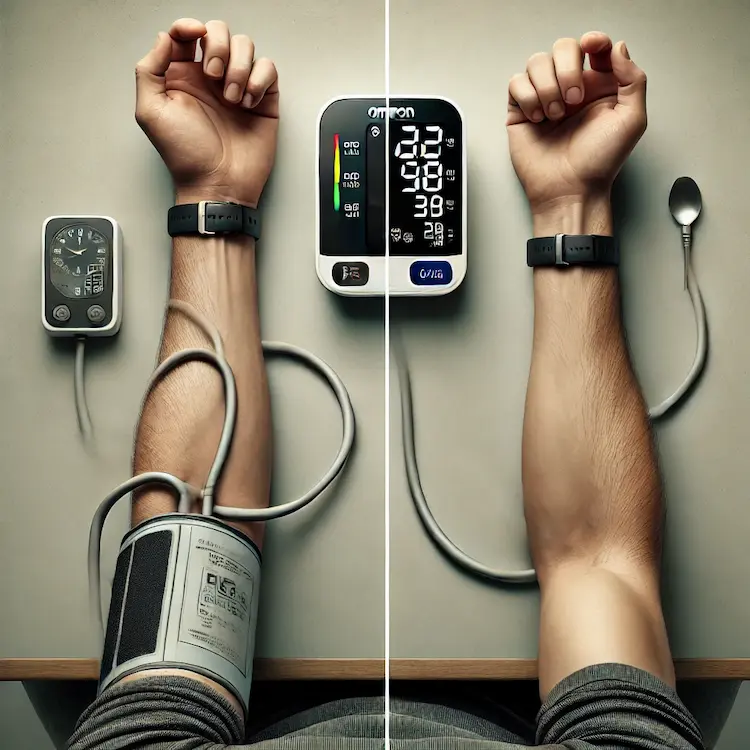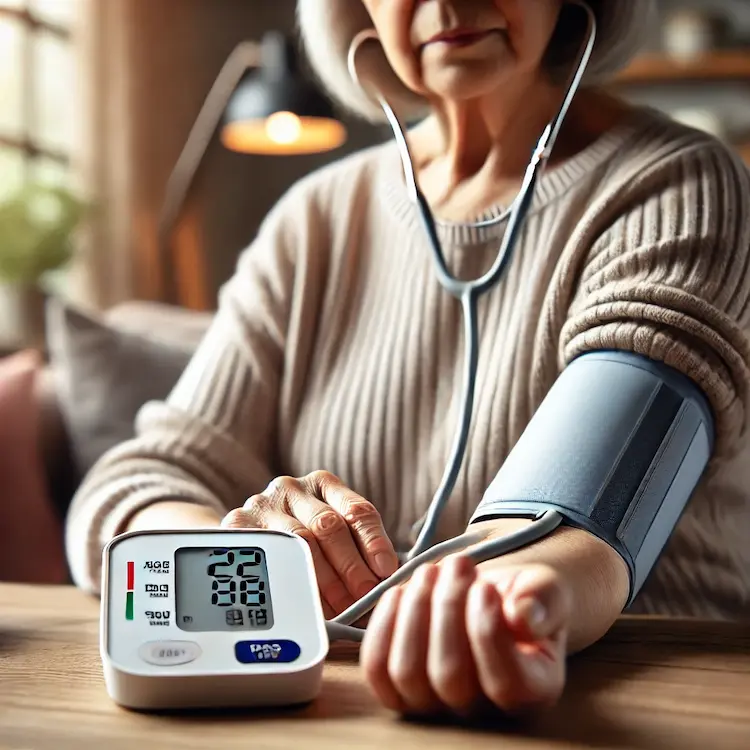With the rising prevalence of hypertension and cardiovascular diseases, home blood pressure monitoring has become essential for proactive health management. Omron, a leading name in digital health devices, offers several reliable blood pressure monitors, including the Omron M2 and Omron RS2. Both devices are designed for home use but cater to different user needs and preferences.
In this article, we compare the Omron M2 (upper-arm blood pressure monitor) and the Omron RS2 (wrist blood pressure monitor) in detail. We evaluate their features, accuracy, ease of use, and suitability for different users. By the end of this guide, you’ll have a clear understanding of which device best fits your health tracking needs.
Why Blood Pressure Monitoring Matters
Blood pressure monitoring is crucial for detecting hypertension, which affects 1.28 billion adults worldwide (WHO). High blood pressure often has no symptoms, making regular monitoring essential for early detection and management.
Key Benefits of Home Blood Pressure Monitoring
- Early Detection: Helps detect hypertension before it causes complications.
- Medication Management: Ensures prescribed treatments are effective.
- Reduced Doctor Visits: Minimizes the need for frequent hospital checkups.
- Personalized Health Insights: Helps track patterns and identify lifestyle triggers.

Omron M2 vs. Omron RS2: Feature Comparison
The Omron M2 is an upper-arm blood pressure monitor, while the Omron RS2 is a wrist-based monitor. This fundamental difference impacts their accuracy, usability, and target audience.
Comparison Table: Omron M2 vs. Omron RS2
| Feature |
Omron M2 (Upper Arm) |
Omron RS2 (Wrist) |
| Measurement Type |
Upper arm |
Wrist |
| Accuracy |
Higher (clinically validated) |
Moderate (prone to position errors) |
| Ease of Use |
Requires proper cuff placement |
More convenient, wearable like a watch |
| Display Size |
Large, clear LCD |
Compact LCD |
| Memory Storage |
30 readings |
30 readings |
| Cuff Size |
22-32 cm (fits most arms) |
13.5-21.5 cm (for smaller wrists) |
| IntelliSense Technology |
Yes (automatic inflation) |
Yes |
| Irregular Heartbeat Detection |
Yes |
Yes |
| Battery Life |
~1000 measurements (AA batteries) |
~300 measurements (AAA batteries) |
| Portability |
Less portable (bulkier) |
Highly portable |
| Best For |
People needing high accuracy |
Active users, travelers |
Detailed Feature Breakdown
Accuracy & Reliability
Accuracy is the most crucial factor when choosing a blood pressure monitor.
Omron M2 (Upper Arm Monitor)
-
- Upper-arm measurements are closer to clinical standards as the cuff is positioned at heart level.
- Reduces the risk of measurement errors due to arm movement or wrist positioning.
- More reliable for users with hypertension or those requiring precise monitoring.
Omron RS2 (Wrist Monitor)
-
- Wrist monitors are generally less accurate because wrist arteries are thinner and more sensitive to movement.
- Correct posture (holding the wrist at heart level) is crucial for reliable readings.
- Best suited for users who struggle with upper-arm cuffs (e.g., those with mobility issues).
Winner: Omron M2 (for accuracy).
Omron RS2 is a good alternative for convenience, but requires careful positioning.
Ease of Use & Convenience
- Omron M2: Requires proper upper-arm cuff placement, which may be difficult for elderly users or those with limited arm mobility.
- Omron RS2: More user-friendly since it straps onto the wrist like a watch.
Winner: Omron RS2 (for convenience).
Ideal for people on the go, travelers, or those with limited arm mobility.
Comfort & Cuff Size
- Omron M2: Comes with a 22-32 cm cuff, suitable for most adults. A larger cuff (32-42 cm) is available separately.
- Omron RS2: Fits wrist sizes 13.5-21.5 cm, making it less versatile.
Winner: Omron M2
A better fit for a broader range of users.
Display & Readability
- Omron M2: Large LCD screen, easy to read even for elderly users.
- Omron RS2: Smaller display, might be harder for some users to read.
Winner: Omron M2
Better for those with vision difficulties.
Battery Life & Portability
- Omron M2: Uses AA batteries (longer battery life).
- Omron RS2: Uses AAA batteries (shorter lifespan).
Winner: Omron M2 for battery life, Omron RS2 for portability.
Frequent travelers may prefer the RS2.
Who Should Buy Which?
Choose Omron M2 if:
- You need highly accurate readings
- You prefer an upper-arm monitor (recommended by doctors)
- You need a large, clear display
- You want longer battery life
Choose Omron RS2 if:
- You need a compact and portable device
- You struggle with upper-arm cuffs
- You travel frequently and want a wrist monitor
- You prioritize ease of use over clinical-grade accuracy

Final Verdict: Omron M2 vs. Omron RS2
If accuracy is your top priority, Omron M2 is the better choice due to its clinically validated readings. However, if portability and ease of use matter more, Omron RS2 is a convenient alternative—but it requires proper positioning for reliable readings.
| Best for… |
Omron M2 |
Omron RS2 |
| Clinical-grade accuracy |
✅ |
❌ |
| Portability |
❌ |
✅ |
| Elderly users (easy-to-read display) |
✅ |
❌ |
| Frequent travelers |
❌ |
✅ |
| Mobility-impaired users |
❌ |
✅ |
Key Takeaways
- Omron M2 is more accurate but less portable.
- Omron RS2 is more convenient but requires precise wrist positioning.
- Choose Omron M2 for accuracy and Omron RS2 for portability.
- Regular blood pressure monitoring is essential for managing heart health.
Actionable Recommendations
- For best accuracy, always measure blood pressure at the same time daily.
- For Omron RS2 users, ensure your wrist is at heart level to avoid errors.
- If unsure, opt for Omron M2, as upper-arm monitors are recommended by medical professionals.
- Replace batteries regularly to maintain device accuracy.
- Consult a doctor if readings are consistently high or irregular.

